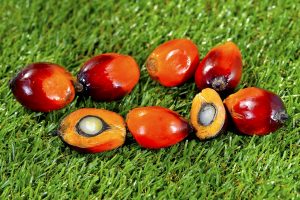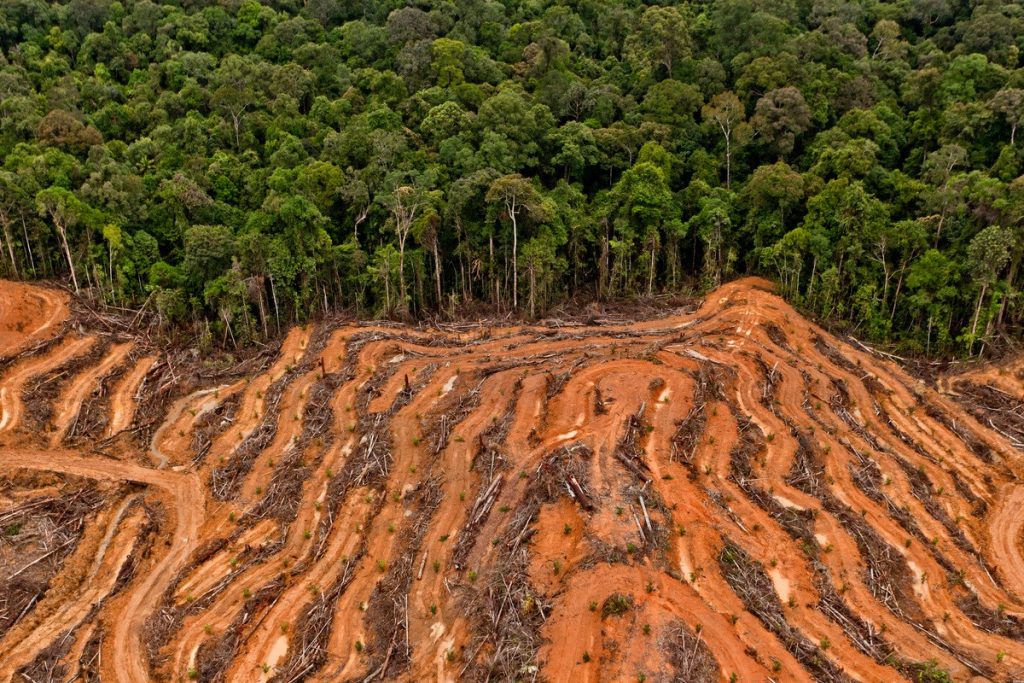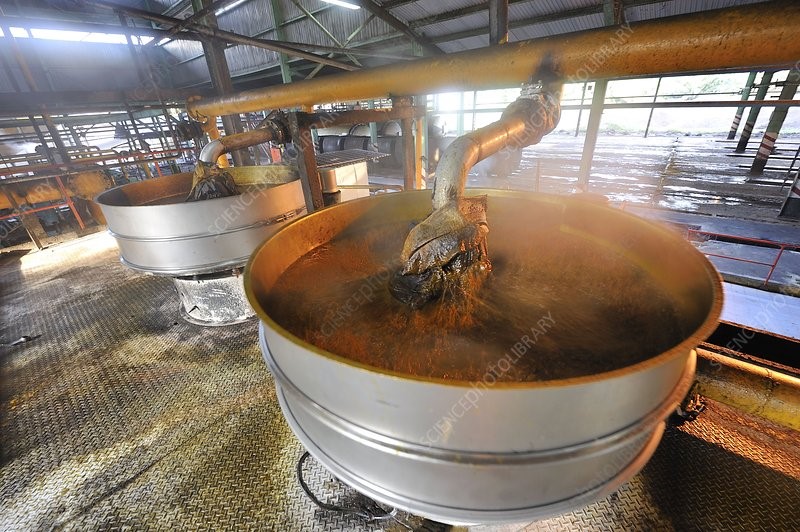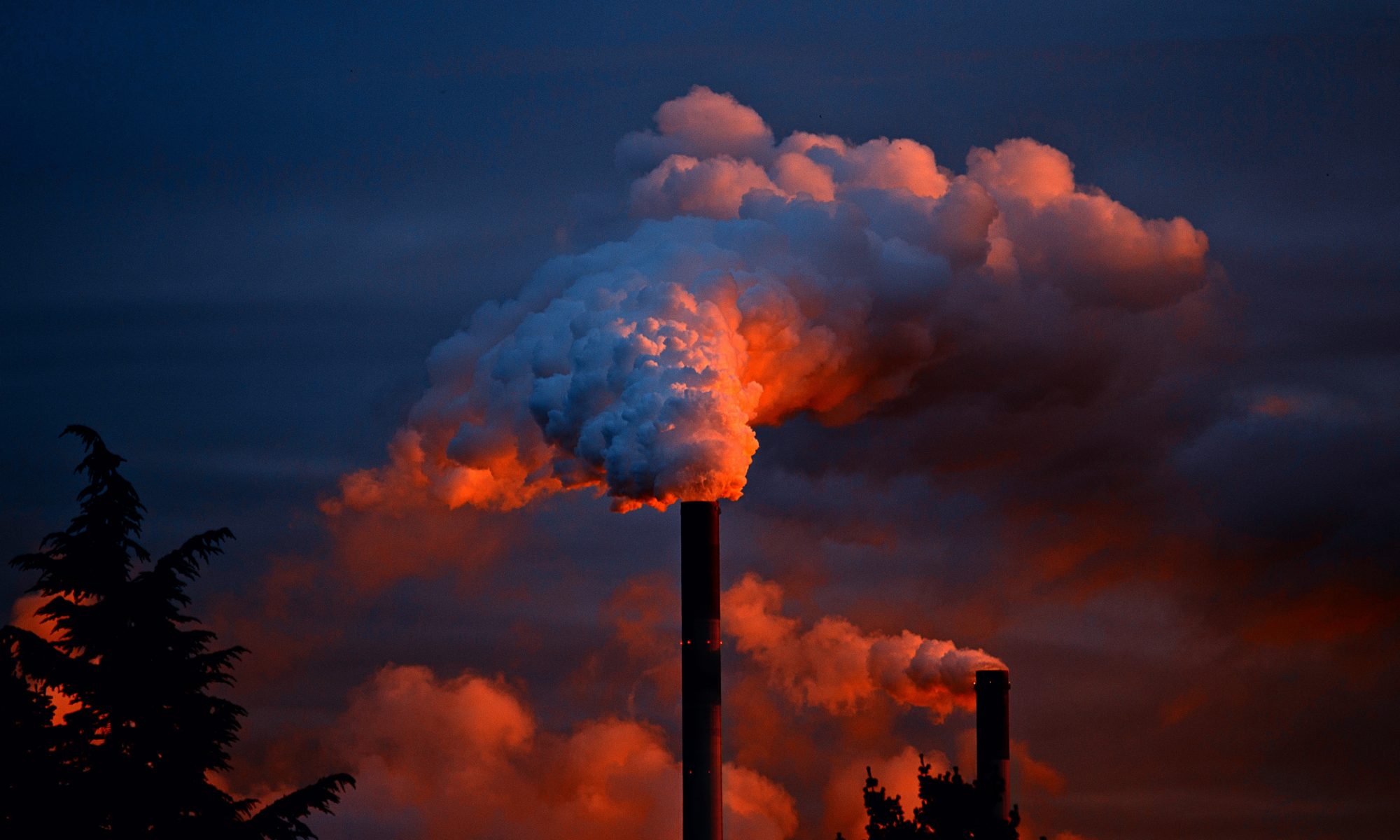Sasha, Year 10, looks at the positives and negatives of each stage of palm oil farming and explores how we can minimise the downfalls to combat the climate crisis.
What is palm oil?
Palm oil is a versatile, widely used vegetable oil, and is made from oil palms, grown in countries with a tropical climate, such as Indonesia, under strict agro-ecological conditions only found 10 degrees North and South of the Equator[1].
How is it grown?[2]
- To ensure only the best oil palms grow in the farms, there are a team of

Photo above (Pixabay): Palm tree seeds researchers who analyse the seeds of existing oil palms. They select the healthiest palms and pollinate them with pollen from selected male specimens. The farmers then cover the palms with material to prevent any accidental pollination and to shield the trees from excessive sunlight.
- It takes 6 months for the hybrid seeds to be produced, during which time the trees must be fertilised and maintained for maximum results. The fertilisers not only damage the fauna of the immediate environment but can easily leech into the (abundant) surface runoff, thus contaminating the animals’ water sources.
- After the seeds are collected, they are transported to warehouses where they are misted to speed up germination. On a positive note, the transport is not as unsustainable as people think – it has to be able to manoeuvre on the unsteady rainforest ground, and therefore cannot be industrial. Other means of transportation include local animals or tractor carts.
- The germination process involves a selective stage, where skilled workers sort through the seeds to discard any crooked or diseased seeds. This creates jobs for the local community, and supports the economy of the region, providing universal skills for them in the process.
- The seeds are grown outside the warehouses in small bags.
- However, when the trees reach maturity 3 years later, they can begin to require much more space for enough fruit production. This is probably the most well-known issue of the palm oil industry, as many companies are prioritising their palm oil production over the rainforest and the ecosystem as a whole, thus they deforest large areas.
The orangutans are most impacted by deforestation, as not only does the noise pollution distress them, it causes them to move further and further away from the centre of the rainforest, into the outskirts, where they may not be able to survive. Not only that, but the cutting (and sometimes burning) of the trees releases tonnes of stored CO2 back into the atmosphere, so much so that Indonesia (the largest world producer of palm oil) surpassed the USA in their greenhouse gas emissions in 2015.
Furthermore, the indigenous people, just like the orangutans and the Sumatran tigers[3], are disregarded and pushed further away from their territories, causing tension between different groups as they are forced to move closer and closer together.

How is it extracted?
- The fruit is processed in a factory – which is powered by biofuel made from the remains of the processed palm oil kernels. This is a sustainable initiative which somewhat balances the emissions produces by the factory as the palm fruit is initially sterilised in steam.
- The fruit moves through a grid that separates the actual fruit from the stalks. They are crushed to release crude palm oil and are processed in a centrifuge to remove any impurities, while the kernels move on to be made into palm kernel oil.

What is being done?
- The RSPO (Roundtable on Sustainable Palm Oil) certifies and works with major palm oil plantations to reduce the emissions and to protect the needs of the locals, deeming some brands “sustainable”;
- The University of Reading has come up with a plan to buffer 1-4km around settlements close to oil palm plantations, to protect their farmland;
- There are some sanctuaries created for the endangered species of the rainforest;
- Large companies should strive to invest in green energy to power the plantations and factories.
Is it sustainable?
Overall, palm oil is a very controversial product, specifically because of its social, economic and environmental impacts, both local and global, and both positive and negative. As more people become aware of the impact on the environment and different communities, TNCs (Transnational Corporations) will be forced to take action. For now, we must all strive to select, whenever possible, products certified by the RSPO and educate ourselves and others of the vast impacts of the “Golden Crop”. By changing our own personal habits, we can have a collective impact to start the journey to combating climate change.
References:
[1] https://www.toptal.com/finance/market-research-analysts/palm-oil-investing?utm_content=palm-oil&utm_source=Quora (Orinola Gbadebo-Smith – An Investor’s Guide to Palm Oil)
[2] https://www.youtube.com/watch?v=Lf-GiulGlqg (How it’s made – Palm Oil)
[3] https://www.wwf.org.uk/updates/8-things-know-about-palm-oil (WWF – 8 Things To Know About Palm Oil)

